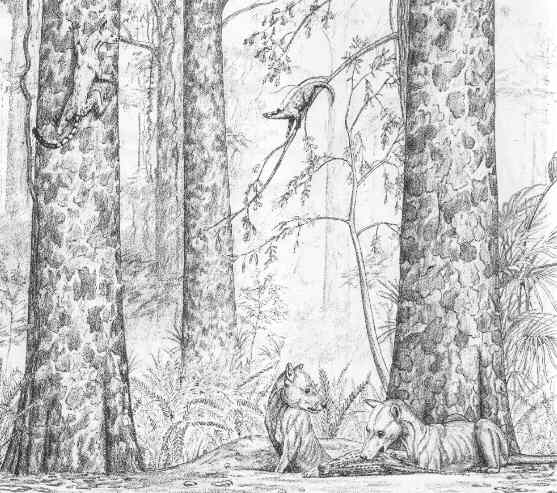
The target of this section of the site is to compile the most interesting facts about Paleocene mammals. Paleontological literature can be a somewhat dry matter, especially if the subject is known from not more than fossil teeth and the entire animal remains largely unknown, as is often true for early mammals. Naturally, biological interpretations are quite limited in such cases. Nevertheless, there are exceptional cases where we can get a more complete idea of the animal and its behavior. I have tried to extract from the literature these highlights, besides giving an overview of the evolution and relationships of Paleocene mammals.

Reconstruction of a middle Paleocene habitat in New Mexico, USA. On the forest floor two mesonychids of the genus Ankalagon are eating the small crocodile Allognathosuchus. On the left the coati-like arctocyonid Chriacus is skillfully climbing up a plane-tree and is watching a Deltatherium on the small branch in the middle. Ankalagon and Chriacus are primitive members of the hoofed mammals, whereas the relationships of Deltatherium are still debated. Drawing by Gregory S. Paul, from Stanley (1989).
Beyond mammals: Other Paleocene vertebrates
Source of figure:
Stanley, S. M. 1989: Earth and Life Through Time. Freeman and Company.